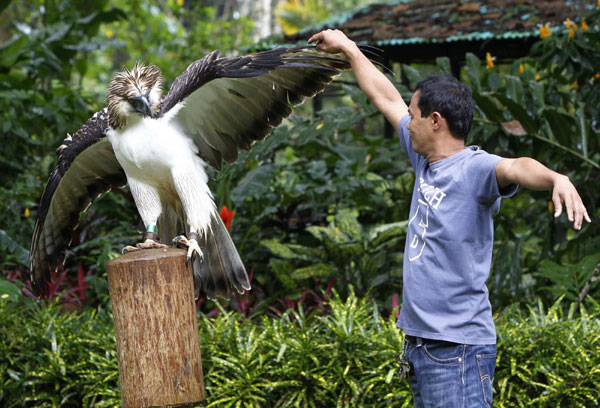The Philippine Icon which I consider as my identity being "Pinoy" because these are not found somewhere they are "only found in the Philippines."
Guys let us know them one by one......
Jose Rizal (National Hero)
Jose Rizal is the Philippines national hero and pride of the Malayan race, was born on June 19, 1861, in the town of Calamba, Laguna. He was the seventh child in a family of 11 children (2 boys and 9 girls). Both his parents were educated and belonged to distinguished families. He was considered hero because he was the first filipino who fight against the Spaniards and wrote a book against the Spanish people NOLI ME TANGERE, EL FILIBUSTERISMO and a poem Ultimo Adios. He died at Bagumbayan Field in the cold morning of December 30, 1896 a man whose 35 years of life had been packed with varied activities which proved that the Filipino has capacity to equal if not excel even those who treat him as a slave.
As I have noticed in every president terms they always made a money of their own or changing the old one. Now, my way of keeping the old one I put the money in a bottle for my future children that they could still have knowledge/idea about the Philippine money during the decayed...
Sampaguita flower
The child who is selling the flower commonly found at the park...each garlan is cost 5 pesos. He is less fortunate child where his parents are irresponsible who are just depending their child`s income...what a pittyful child and a dam parents...!!! So everytime I pass by the park I always buy Sampaguita to help the child that he may have food eat everyday and it is may way of help to the child instead of ignoring him.
Sampaguita flowers are very popular in the Philippines where they are strung into necklaces and sold in the streets of Manila. They are usually given to tourists, new graduates, and competition winners either as traditional welcome offerings or as honorary symbols for their achievements. The garlands are also given to saints, whether in churches or altars at home. The flowers are treasured for their distinct fragrance, and are even used in perfumery and tea-making.
The name “sampaguita” is believed to have come from the Filipino words “sumpa kita,” meaning “I promise you.” In early days sampaguita garlands are exchanged by young couples as a pledge of their love, not unlike the exchange of rings in wedding ceremonies.
Bangus (Milkfish)
Milkfish, Chanos chanos (Forsskal), locally known as "bangus" or "bangos", is the predominant species being cultured in the Philippines. Hundreds of years ago bangus was grown in ponds along coastal areas. That was the beginning of fish fanning. Bangus is a popular table fare among Filipinos. To the biologist, it is an innately sturdy fish, being able to adapt and thrive even in the confined, unnatural environment of the fishpond. This characteristic is not often found in most other fish species.
The milkfish is my number one favorite fish among all the fishes of the Philippines. When I was in Davao my main dish is always fried bangus and when I move to Cebu I could no longer eat bangus because, no one in here is skillful to debone the fish ...so sad.... :(

Nara Tree
National Tree: Narra (Pterocarpus indicus) is a beautiful and strong tree. It is a favorite wood for furniture but because there are only a few trees left, cutting down a Narra tree is no longer allowed.It is found in Bicol, Mindanaoand the Cagayan Valley forests and in Juana Osmena Blvd. St., Cebu City.
National Tree: Narra (Pterocarpus indicus) is a beautiful and strong tree. It is a favorite wood for furniture but because there are only a few trees left, cutting down a Narra tree is no longer allowed.It is found in Bicol, Mindanaoand the Cagayan Valley forests and in Juana Osmena Blvd. St., Cebu City.
I`ve been staying in Cebu City for 31 years but I never had any picture of Nara tree. If it is not my biological teacher Ms. Minzo I never had any knowledge about the narra tree image...that I just always pass by everytime I go to my university.
The carabao is also considered a national symbol of the Philippines as well as in Guam. They were imported into Guam from the Philippines in the late 1600s during the Spanish colonial administration of Guam as a beast of burden and as transportation. They were used for farming and to pull "carabao carts." As recently as the early 1960s, carabao races were a popular sport on Guam, especially during fiestas.
Monkey-Eating Eagle @ Davao Eagle Farm
The monkey-eating eagle, the Philippine eagle is unique to the forests of the Philippines. Deforestation through logging has been its primary threat, and now it is considered one of the most critically endangered species in the world, according to the International Union for the Conservation of Nature.
The monkey-eating eagle I saw it at Davao Eagle farm and crackerjack man let the eagle spread his wings and follow his command...so impressive!!!
Tarzier @ Lobok River-Bohol
完全無料オンライン英会話いんぐりhttp://engli.jp/



Let us put value the simple things around us....because in the future we may no longer found them....
ReplyDelete